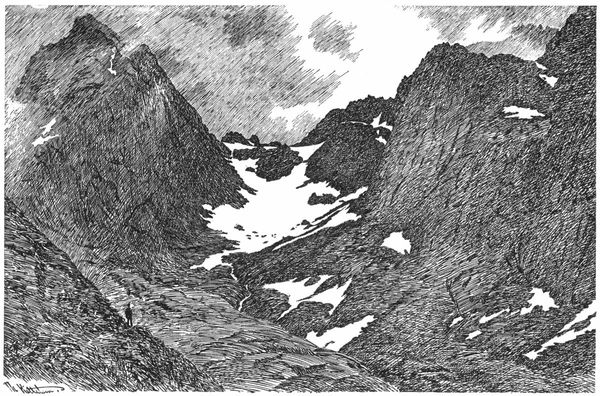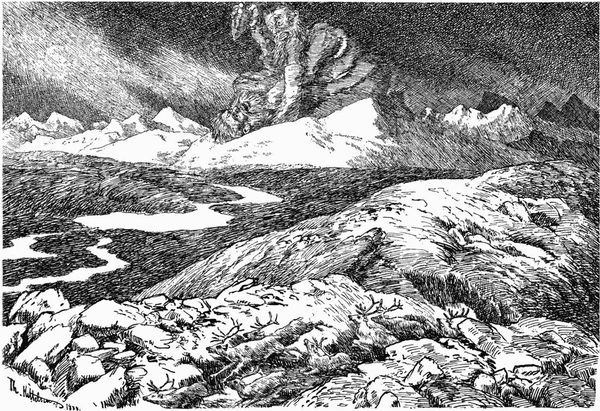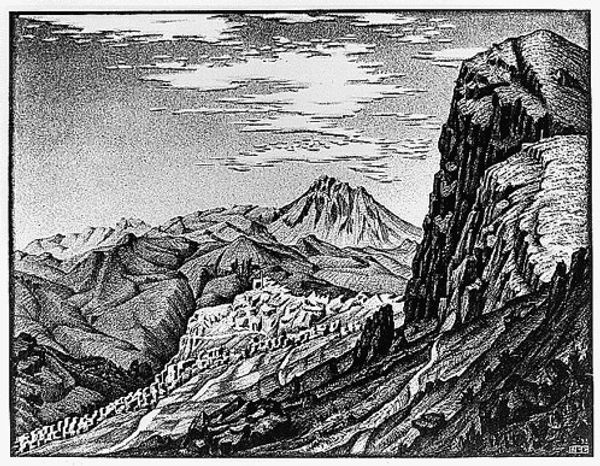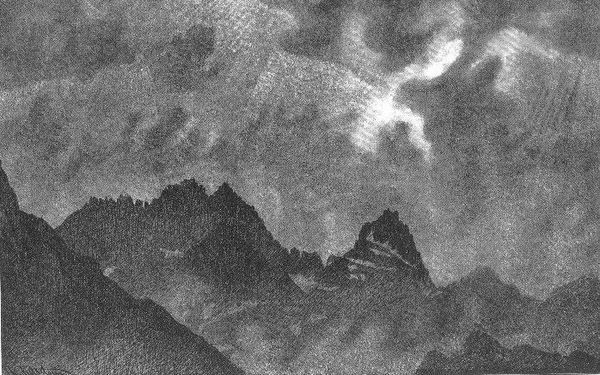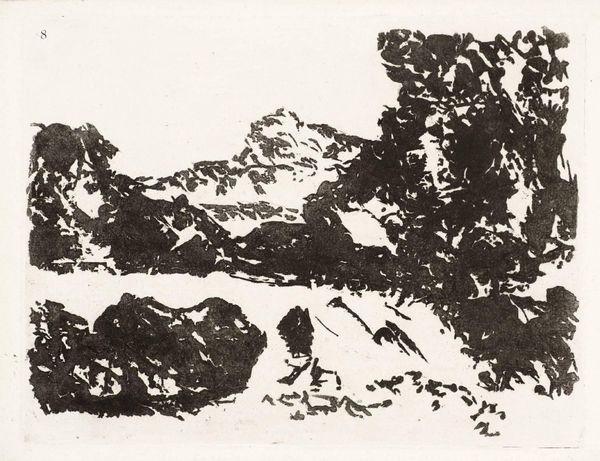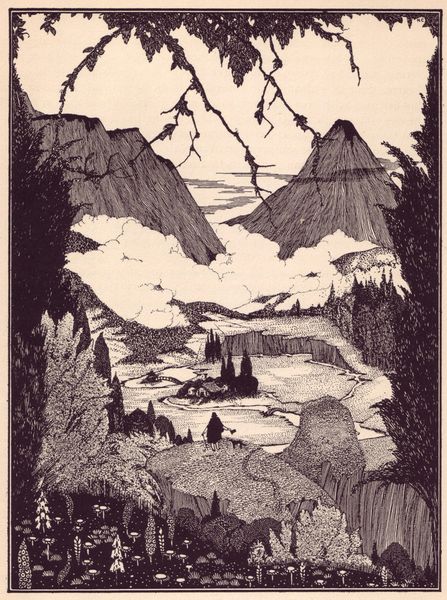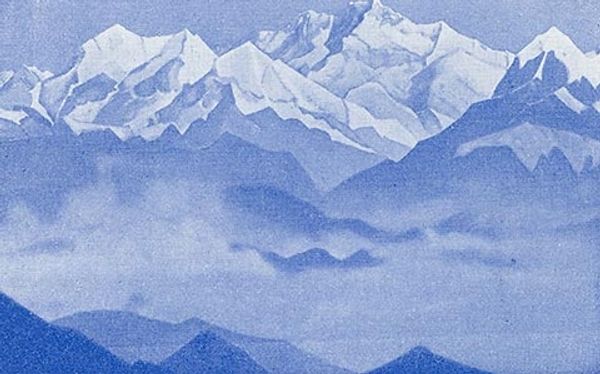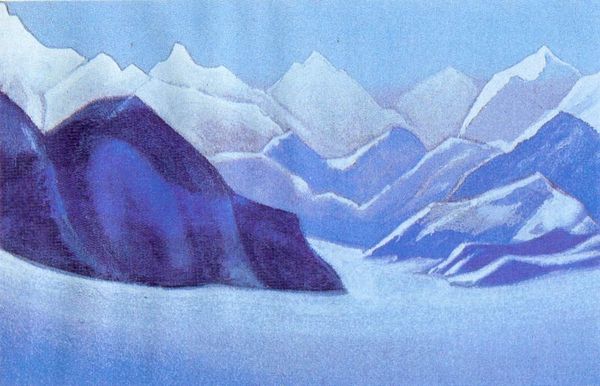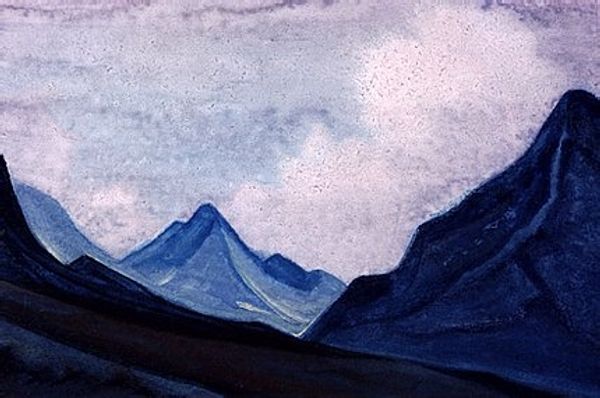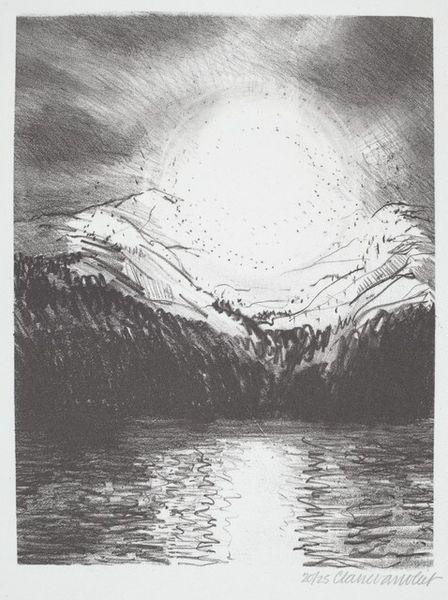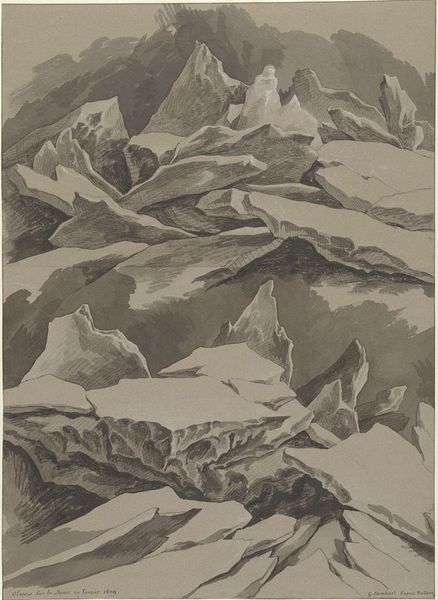
Copyright: Public domain
Editor: Right now, we're looking at Theodor Kittelsen's 1891 pencil drawing, "In the Raftsund Mountains." The stark monochrome palette and jagged lines give it such a dramatic, almost intimidating feel. I’m curious about how it resonates beyond just a landscape depiction. What do you see in this piece? Curator: What immediately strikes me is the human figure, almost swallowed by the immensity of the mountains. The size contrast evokes the concept of the sublime. Kittelsen masterfully uses linear marks, like the diagonal shading across the sky. The crosshatching gives dimension to what is essentially a black and white drawing. But have you considered what cultural memory might be embedded here? What associations does a stark monochrome landscape, absent of typical Romantic color, evoke? Editor: That's interesting, I hadn’t thought about the cultural memory. Perhaps a feeling of isolation or the unforgiving nature of the Scandinavian landscape? Curator: Exactly! And notice how the use of sharp lines mimics the jagged edges of the mountains themselves, creating a symbolic relationship. This use of symbolism goes hand-in-hand with Romanticism, but is pared down to be harsh and unforgiving. Think about the history of landscape painting – how does Kittelsen both fit into and break from that tradition with this particular image? Editor: I see how it’s playing with that history. I guess I always saw it as simply a striking landscape, but thinking about the cultural symbols at play, especially the vastness of nature versus humanity, makes it far more complex and engaging. Curator: Precisely. The image transcends mere representation; it becomes a container for complex ideas about human existence in the face of the indifferent, sublime natural world, doesn't it?
Comments
No comments
Be the first to comment and join the conversation on the ultimate creative platform.
